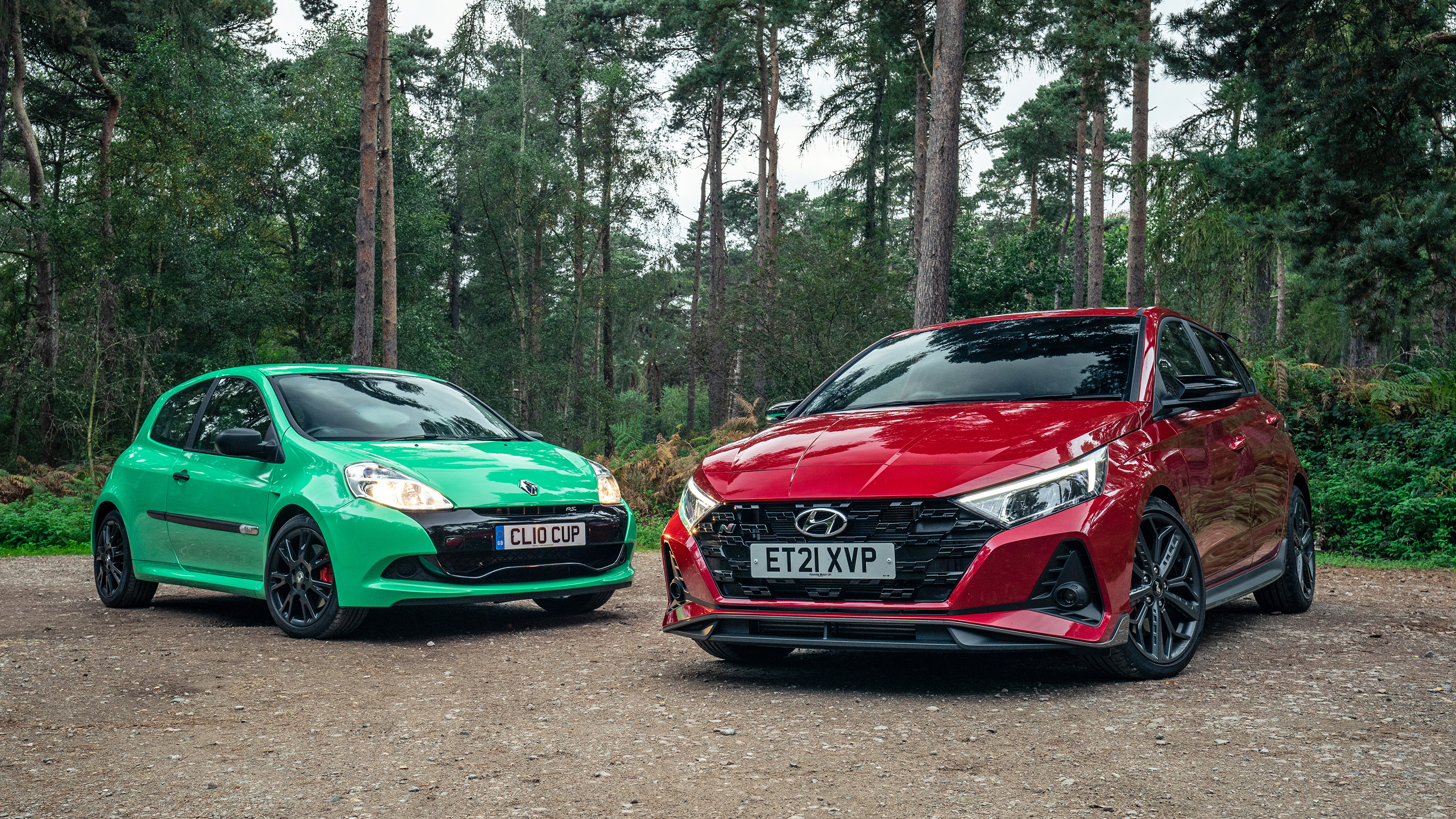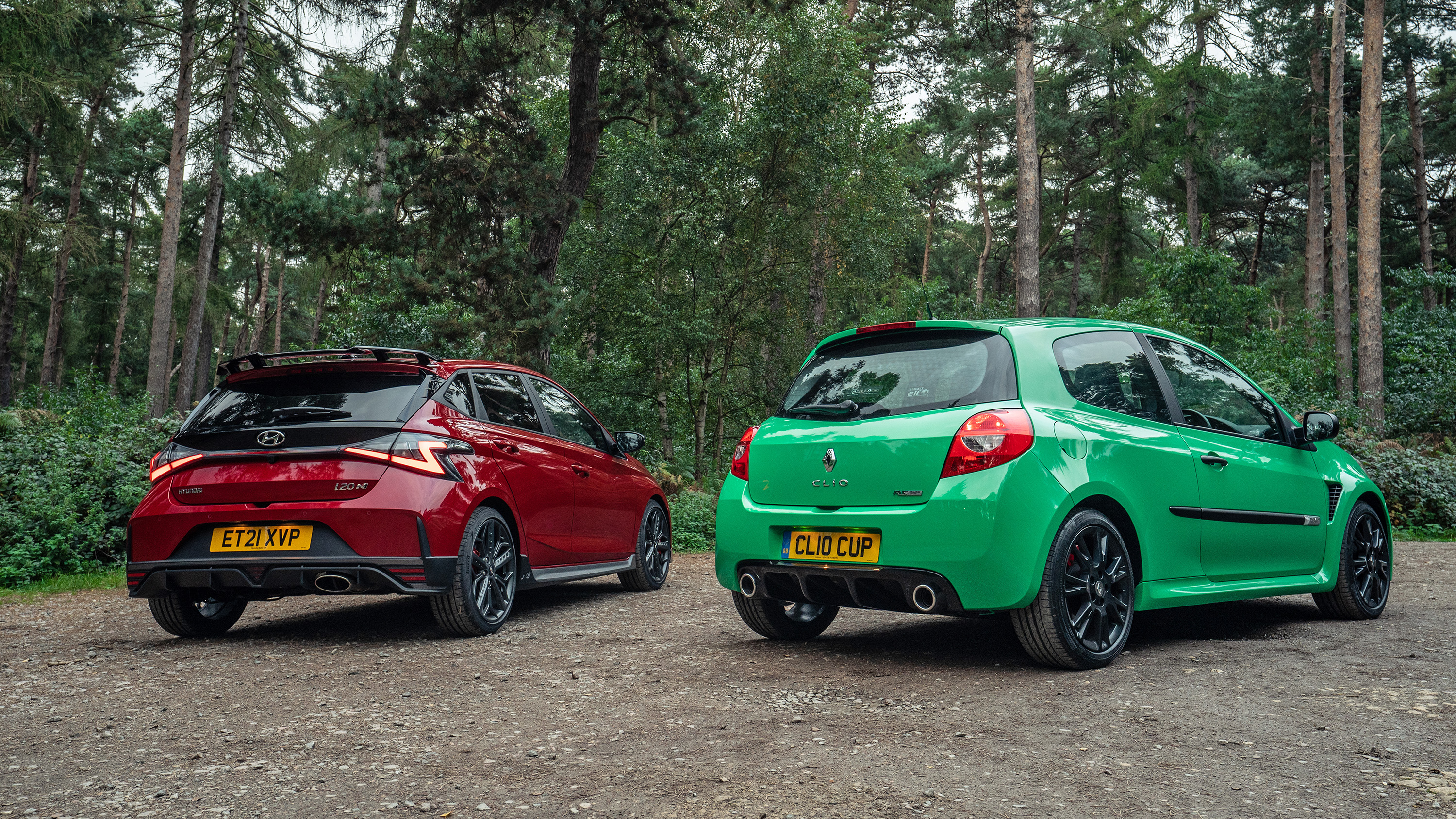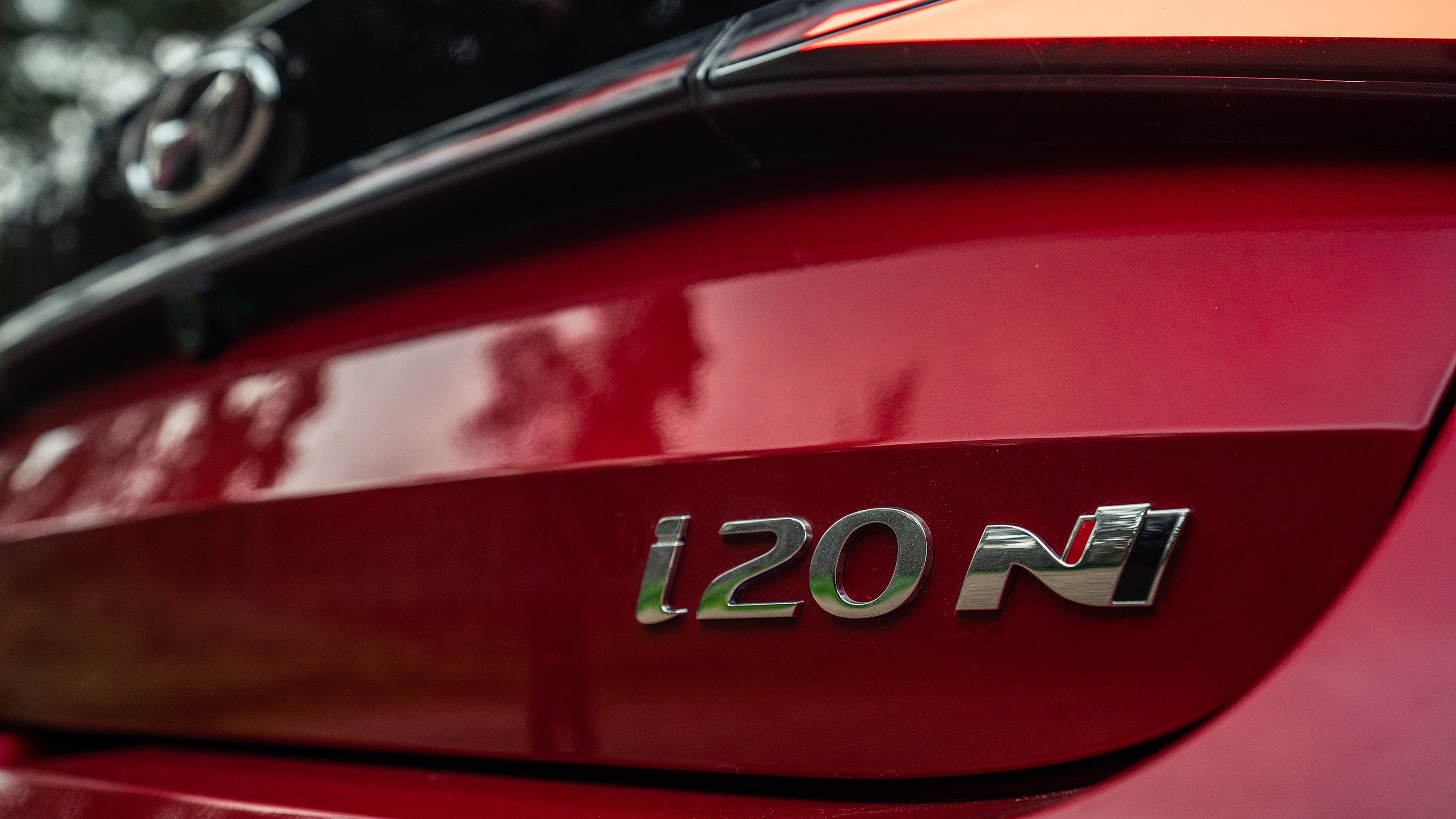
SPEC HIGHLIGHTS
- SPEC
Hyundai i20N
- ENGINE
1598cc
- BHP
204bhp
- 0-62
6.2s
Pitting our Hyundai i20N against a hot hatch icon
The Hyundai i20N has thus far proved unflappable. I therefore felt compelled to present TG’s overall Car of the Year with the sort of challenge nothing registered in 2021 could apparently muster. Namely the best hot hatchback ever made.
Big words, but I’m willing to nail them to the 2009 RenaultSport Clio 200 Cup. There are more extreme hot hatches, not to mention faster ones. But none muster so much hyperactivity without disrupting their base car’s seating plan.
Have I made things too tough for the i20N, inviting along an icon made several generations of safety and efficiency regs ago? Well on paper it’s a dead heat. They’re basically the same weight and power, the Clio’s 1,204kg/197bhp playing the i20N’s 1,220kg/201bhp. Their power-to-weight ratios are split by a single horsepower (in South Korea’s favour) with their length, width and wheelbase even closer pegged.
And crucially both feel developed with the same nerdy detail. Hyundai has fine-tuned its rev matching to the nth degree and made it easy to turn off, while the Renault has no such tech but the most exquisitely shaped throttle pedal to make it the most joyously geeky activity in the world.
That sort of thing’s expensive to develop and homologate, much like the Clio’s extra wide bespoke bodywork which led it to being produced in Renault’s specialist Dieppe factory which now pumps out Alpines. And I fully believe its amazing optional Recaros – unequivocally the best seat ever fitted to a mainstream car – are what led to the fabulous in-house buckets you find standard in the i20N (and rivals). I think this whole car perked everyone up and raised the bar in its class.
It’s mesmeric. Buzz its naturally aspirated 2.0-litre to 8,000rpm with the car up on its toes and you’ll wish for nothing else on the planet with four wheels. Seriously. The Clio 200 lives on the cusp of analogue and digital; not so ancient that it skates around like it’s on space-savers or puts your stomach in your mouth every time you brake, but old enough to contain no drive modes or complication. You want more noise from the exhaust? You work the fabulous engine harder. You want your downshifts rev-matched, or to feel the rear axle slide? You learn how to make those things happen yourself.
By comparison, the Hyundai hands you everything with less effort and speed, yet you’re just as encouraged to pile on both regardless. The most successful hot hatches egg you on and both of these do – constantly. The difference is the Hyundai appeases your occasional need to rest. With its limited-slip differential, rev-match system and midway ‘Sport’ mode for the stability control, it’s happy to take some dynamic slack for you. It appeases your occasional need to rest and sits a tangible 700rpm lower at a 70mph cruise.
It can’t help but feel OTT in its sophistication beside the back-to-basics Cup, but with an engine that growls mischievously into life and even more abrupt ride quality, the same impishness courses through it. The i20N’s seats slot you lower and snugger in the car, too.
But while it meets a broader remit, both of these cars stand for spectacular over-engineering in their own way. Hyundai responds to the Renault’s specialist rear arches with a plethora of additional weld points over a stock i20. Pain in the arse stuff for carmakers to finagle profit margins from, but they help make the hench Hyundai car the brilliant little dose of hilarity it’s proved to be. The bright green Clio remains my favourite hot hatch of all time, but N division has delivered one hell of a tribute act. And a car still to be truly flapped.
Mileage: 3643 Our mpg: 41.1
Photography: Rowan Horncastle
Featured

Trending this week
- Car Review
BMW iX3






